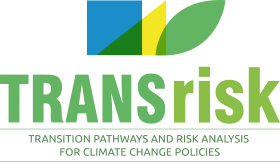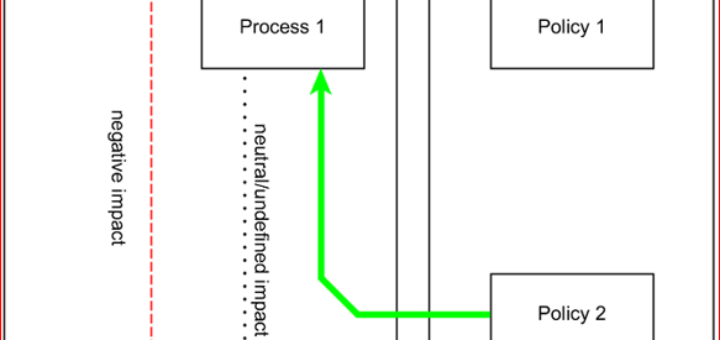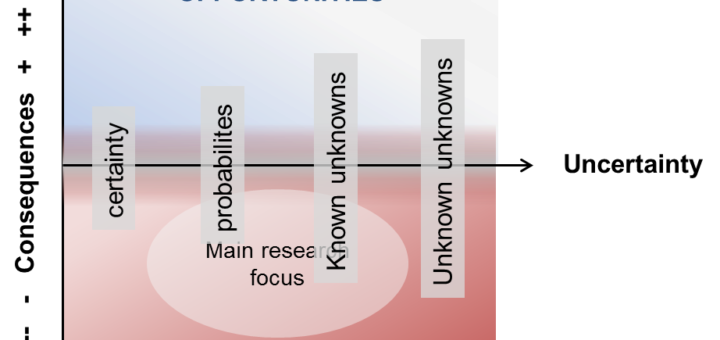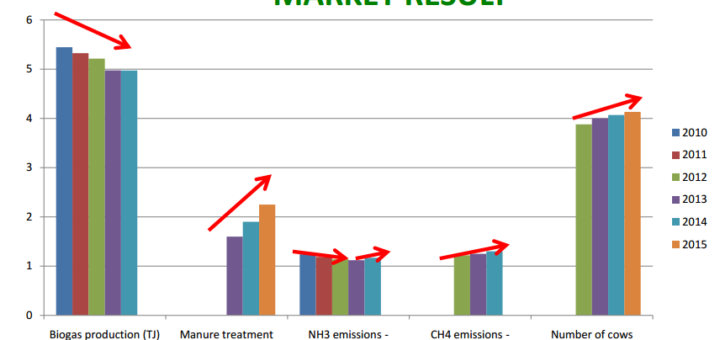Research often focuses on creating and modelling hypothetical scenarios. However, public knowledge and opinions are crucial for the successful uptake of research findings. In this article, we explore how quantitative tools are used for producing scenarios, whereas qualitative tools are used to identify stakeholder preferences.
TRANSrisk

TRANSrisk is an EU funded research project aiming to innovatively transform the way in which climate change policy pathways are developed. The focus is to support EU and global climate change goals by providing analytical tools for risk and uncertainty aware policy making. TRANSrisk acknowledges the importance of modelling exercises, such as those carried out for the EU Roadmap 2050, but also recognises the considerable uncertainties inherent in modelling transition pathways and assessing the costs and benefits associated with mitigation scenarios. There is also a need to consider implementation risks, such as public acceptance of low emission technologies (or lack thereof) and co-effects of mitigation pathways. Unless properly included in policy design, these risks could halt introduction of technically and economically feasible mitigation options. TRANSrisk seeks to understand the costs, level of public acceptance, and the risks, uncertainties and co-effects associated with different mitigation pathways and low-carbon technologies. In order to help policymakers manage uncertainties TRANSrisk will gather data via 15 case studies from the EU and other regions, and employ a variety of different models to explore scenarios and pathways. TRANSrisk will also engage a wide range of stakeholders to help develop credible transition pathways, thus integrating quantitative and qualitative analysis in a unique and innovative way.
Project details
- Project title: “Transitions Pathways and Risk Analysis for Climate Change Mitigation and Adaption Strategies” (TRANSrisk)
- Funding scheme: European Union Horizon 2020 Programme (EU H2020, grant agreement no. 642260)
- Duration: 3 years (1 September 2015 – 31 August 2018)
- Project coordinator: Science Policy Research Unit, University of Sussex, United Kingdom
- Project website: www.transrisk-project.eu
The Netherlands is lagging behind on the implementation of renewable energy technologies and therefore is likely to miss its 14% renewable energy target. To solve this issue, a rapid uptake of solar energy is mandatory, but which pathways are available to make this transition cost-effective?
It is important to have a clear understanding of the relevant systems when designing pathways towards low emissions. An innovative tool has been designed specifically for the purposes of system mapping: Mapping Tool for Innovation Systems Evaluation (MATISE).
Choices regarding mitigating climate change are associated with a range of risks and uncertainties. By investigating these choices, a broad conceptual framework accounting for exogenous risks, as risks to the implementation of a policy choice, and consequential risks, as risks resulting from an implemented policy, in the areas of political, regulatory, social, economic, and environmental risks was developed.
Integrated Manure Management (IMM) is a transition pathway in the livestock sector used as a case study in this report. It is an alternative to reducing livestock (RL) numbers and both can be scored in terms of their contribution to meeting environmental targets. With a better understanding of the side-effects of alternative pathways, it will be easier to develop a more robust and integrated policy framework for low-carbon transitions in the livestock sector.






